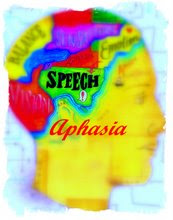BROOKLYN — May is National Stroke Awareness Month, and the group of stroke experts at Maimonides Medical Center is encouraging Brooklyn residents to learn more about this serious health problem. Stroke is the third leading cause of death and a leading cause of adult disability in the United States.
Maimonides will provide free Stroke Risk Screenings on Wednesday, May 30 from 11 a.m. to 2 p.m. at 950 49th St., Brooklyn. Cholesterol, glucose and blood pressure screenings will be offered that day, as well as educational information.
According to Dr. Steven Rudolph, director of stroke medicine at Maimonides, knowing your numbers on these three risk factors can help you learn if you are at higher risk for stroke – and help you start on a plan to keep these risk factors under control.
There are many possible warning signs and symptoms of stroke. The experts at Maimonides strongly urge Brooklyn residents to call 911 and go to the nearest Stroke Center immediately if they experience any of the following: sudden numbness of face, arm or leg especially on one side of the body; sudden trouble seeing in one or both eyes; sudden confusion; trouble speaking or understanding; sudden trouble walking; dizziness, loss of balance or coordination.
If any of these symptoms occur, for even a brief period, it’s vital to seek immediate medical attention. Stroke is a “brain attack,” and rapid response greatly improves the chances for survival and a successful recovery. Stroke damage can be minimized and even reversed – it all depends on the speed with which the stroke sufferer can receive proper medical attention.
And remember, it is critically important where a patient receives care. Hospitals with a stroke center are best equipped to provide the most comprehensive care. The Maimonides Stroke Center is ranked among the top 5 percent in the nation by HealthGrades, the leading source of independent health care quality data.
When a stroke patient arrives at the Maimonides Emergency Room, an evaluation is done rapidly to ensure that the safest and most appropriate treatment is provided. The clot-busting drug, t-PA, is extremely beneficial for some patients, but dangerous for others. It must be administered within three hours of the onset of stroke symptoms.




